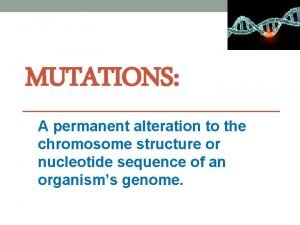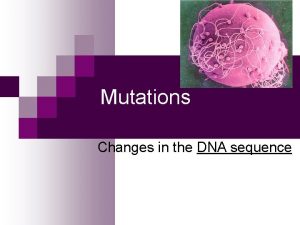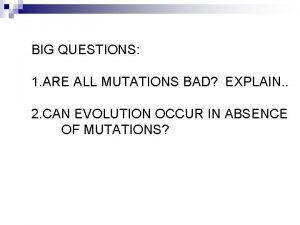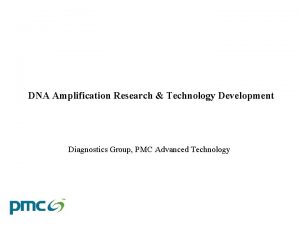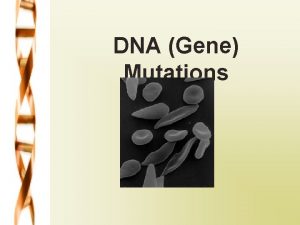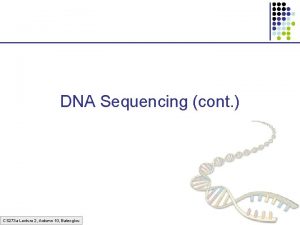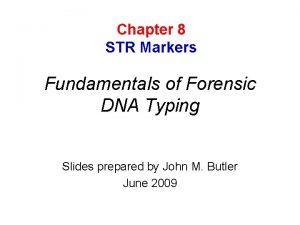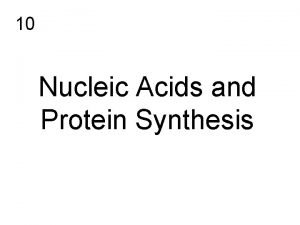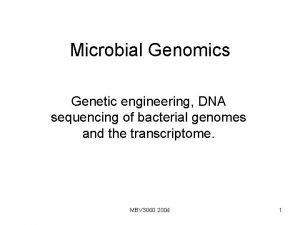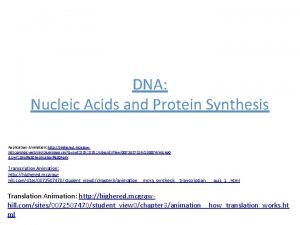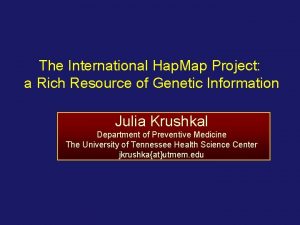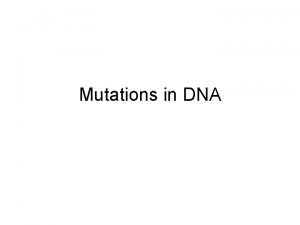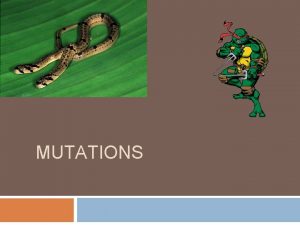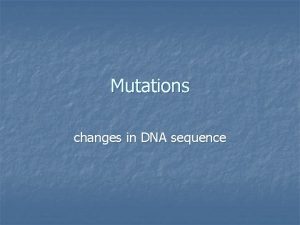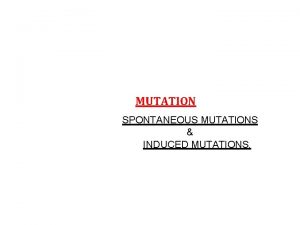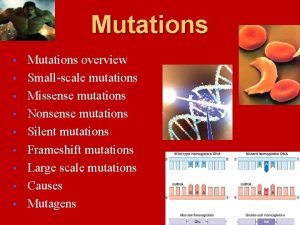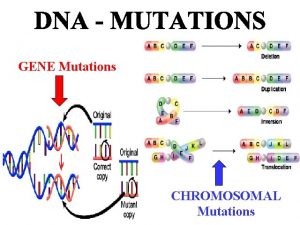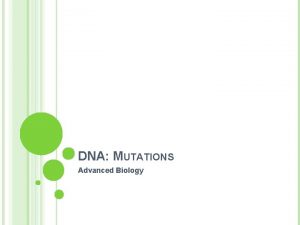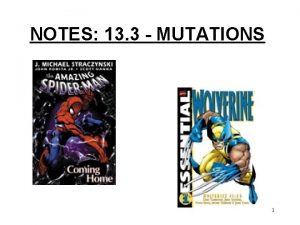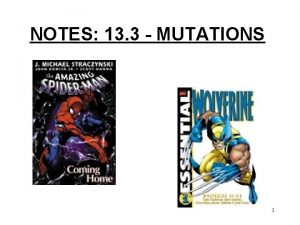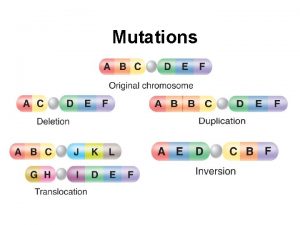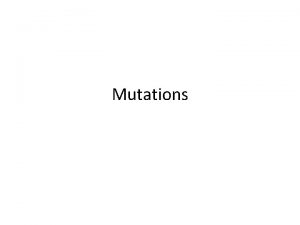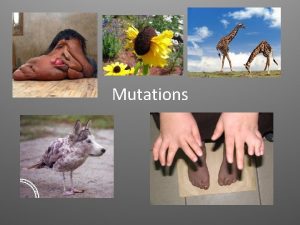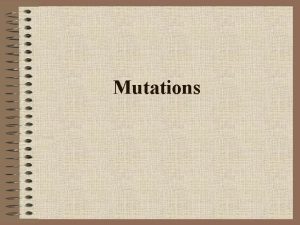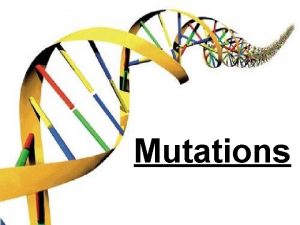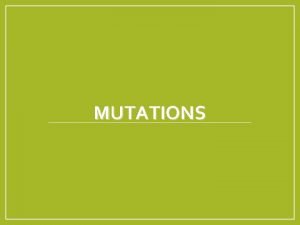Mutations Changes in the DNA sequence Causes of



















- Slides: 19

Mutations Changes in the DNA sequence

Causes of mutations Errors when the DNA is copied during replication During protein synthesis- when proteins are constructed When the cell is dividing- Mitosis or meiosis Sometimes external agents, called mutagens, can cause mutations to occur Examples of mutagens include. Radiation, UV sunlight, and certain chemicals like benzene

Mutations in reproductive cells Changes in the DNA of egg and sperm cells If these altered cells become fertilized then the altered genes of the zygote would become part of the genetic makeup of that organism These changes could produce a new trait in the organism It could result in a protein that does not work properly and death of the embryo OR occasionally it may have a positive effect making if faster or stronger or better able to survive

Mutations in body (somatic)cells These types of mutations would not be passed on to the offspring It may cause problems only for the individual. For example it may cause cells to divide uncontrollably resulting in cancer

Types of mutations I. Point mutations II. Frameshift Mutations III. Chromosomal Alterations

I. Point mutations A change in a single nitrogen base pair in DNA Resulting in a change in a single amino acid used in building a protein It can change the functioning of the protein ANALOGY: THE DOG BIT THE CAT DOG BIT THE CAR *Notice that the change in the single letter changed the meaning of the entire sentence.


II. Frameshift Mutations A single nitrogen base is lost or added in a DNA strand Every nitrogen base after the deleted or added base would be out of place ANALOGY: THE DOG BIT THE CAT DOB ITT HEC AT These types of mutations are more harmful because every base after the change is affected.


III. Chromosomal Alterations When big pieces of the chromosomes are altered in some way These types of mutations are called chromosomal mutations Usually occur during meiosis when egg and sperm are being produced They fall into four categories 1. 2. 3. 4. Deletion Insertion Inversion Translocation

1. DELETIONS Deletions occur when part of a chromosome is left out ABCDEFG ABCD

2. INSERTIONS (DUPLICATIONS) Insertions (duplications) occur after DNA is replicated when part of one chromosome breaks off and rejoins onto another part of the same chromosome so that part of the chromosome is repeated. ABCDEFG ABCDEFDEFG


3. INVERSIONS Inversions occur when part of a chromosome breaks off and rejoins in reverse order. ABCDEFG ABCFEDG

Inversions

Inversions

4. Translocations occur when part of a chromosome breaks off and rejoins on another totally unrelated nonhomologous chromosome. ABCDEFG WXABCDEFG


 Vertus hardiman
Vertus hardiman Dna types of mutations
Dna types of mutations Silent mutation
Silent mutation Mutations in dna
Mutations in dna Mutation causes
Mutation causes Changes in latitudes, changes in attitudes meaning
Changes in latitudes, changes in attitudes meaning Chemical and physical change
Chemical and physical change Replication
Replication Bioflix activity dna replication lagging strand synthesis
Bioflix activity dna replication lagging strand synthesis Coding dna and non coding dna
Coding dna and non coding dna What are the enzymes involved in dna replication
What are the enzymes involved in dna replication Chapter 11 dna and genes
Chapter 11 dna and genes Proximate causes vs ultimate causes
Proximate causes vs ultimate causes Altruistic behavior
Altruistic behavior Human dna sequence example
Human dna sequence example Str
Str Look at the dna sequence gaa-ttc-gca
Look at the dna sequence gaa-ttc-gca Sequence dna
Sequence dna Dna sequence
Dna sequence Dna sequence variation
Dna sequence variation
